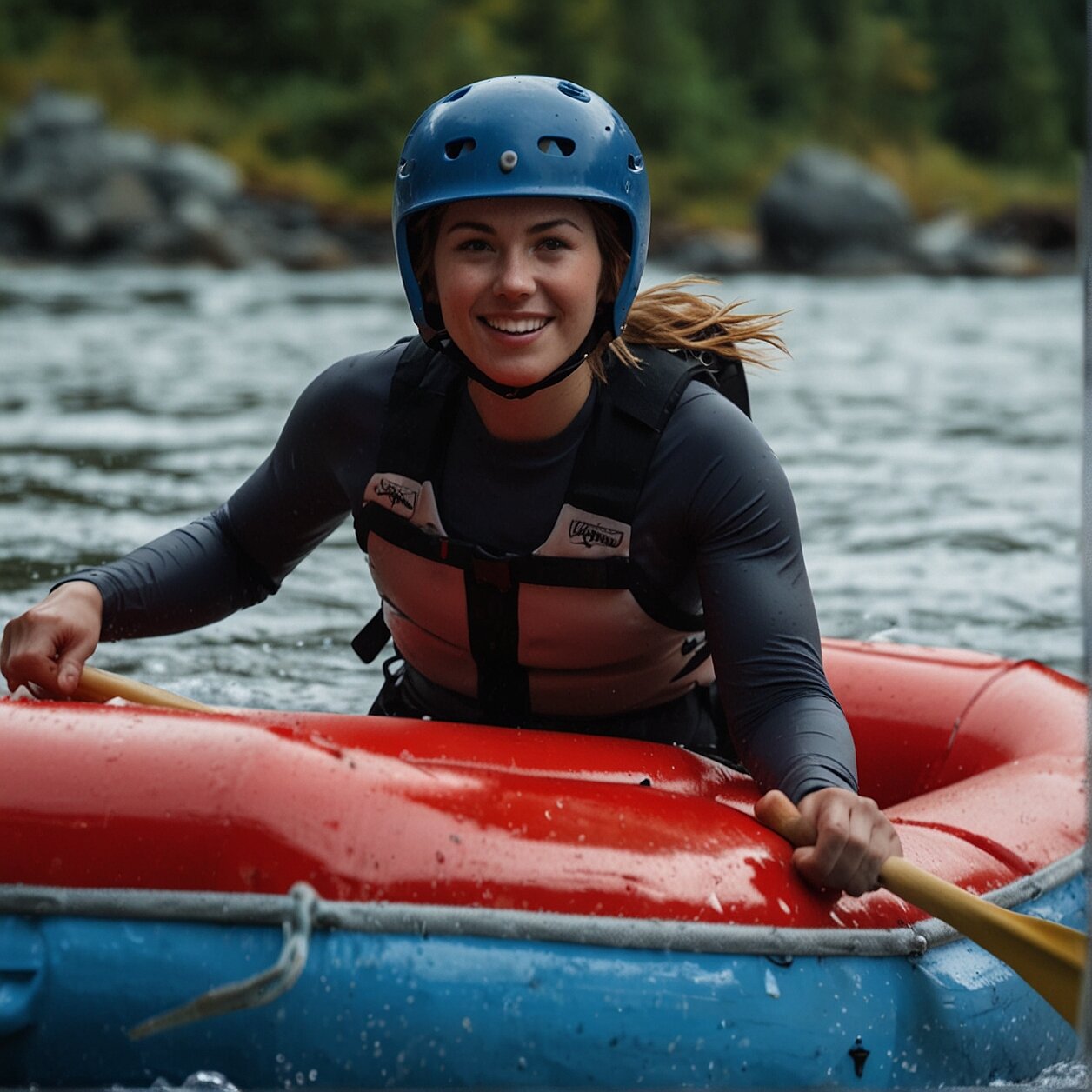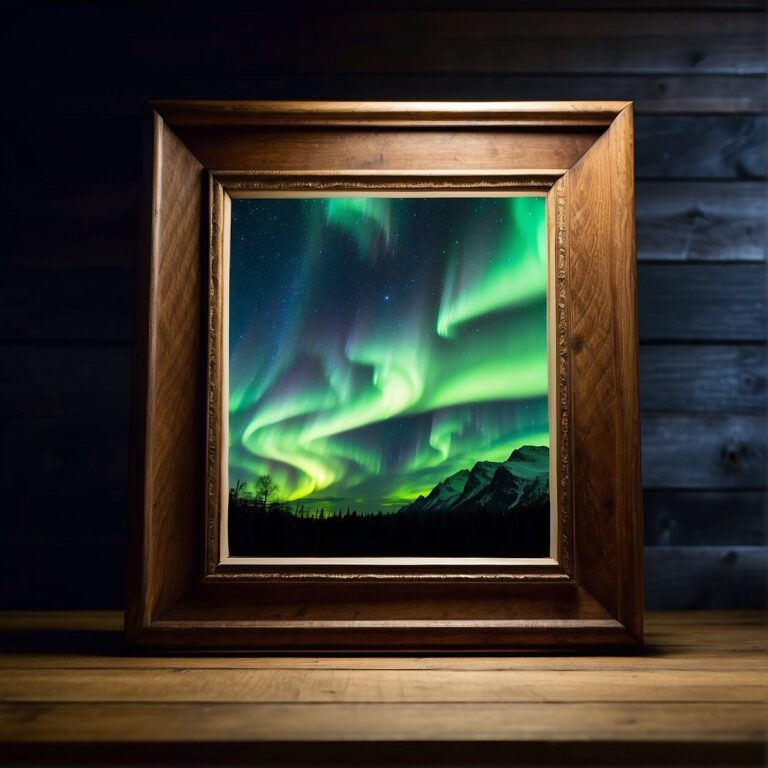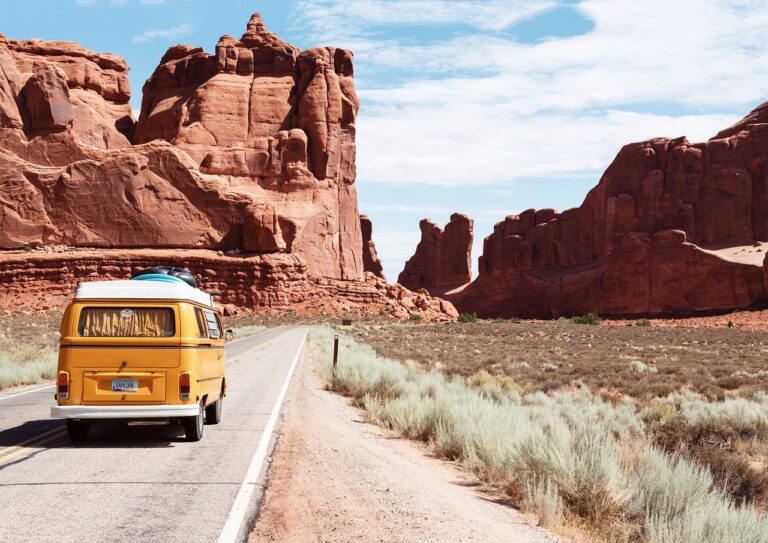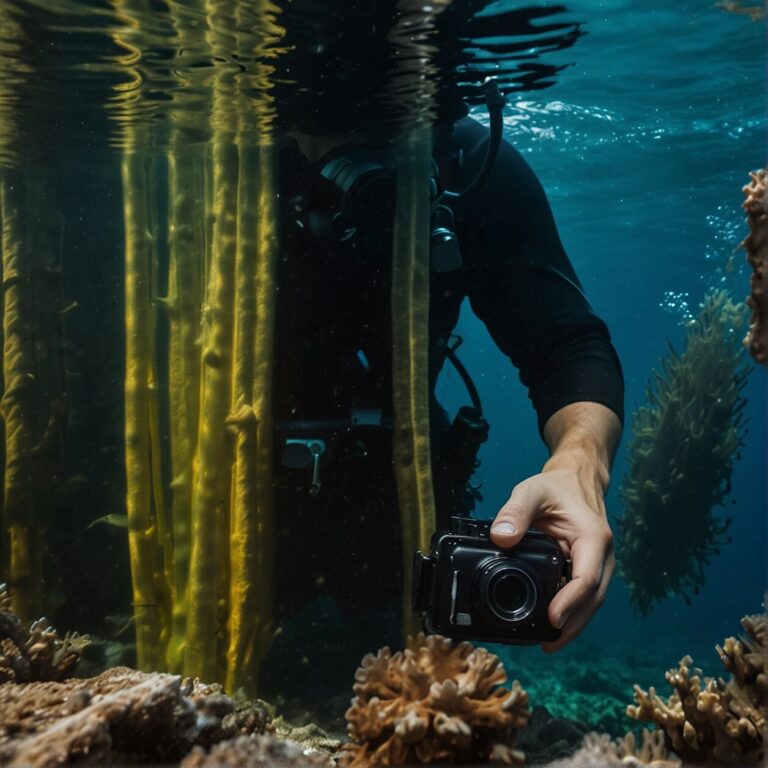White Water Rafting in Alaska’s Untamed Rivers
There’s a wellspring of adventure nestled deep within the striking beauty of Alaska, just waiting to be discovered. A land where white silver mountain peaks and lush, verdant forests intersect with icy rivers that roar with raw, untamed power. Alaska invites you to step into a world laced with both thrill and serenity alike – white water rafting.
Whether you’re an adrenaline junkie always on the hunt for your next thrilling exploit or a nature lover seeking to explore the wild Alaskan landscape from an entirely new perspective, embarking on a white water rafting journey in this beautiful U.S. state is sure to be an unforgettable adventure.
“White water rafting in Alaska isn’t merely an outdoor activity – it’s a full-blown immersive experience, a spectacular mix of thrilling adventure and serene beauty that will leave you hungry for more.”
Unleashing the Alaskan Rapids: An Introduction to White Water Rafting
Doused with exhilaration and a touch of adrenaline – let’s unfold the riveting journey of white water rafting in Alaska. Warbling with Class II, III, and IV rapids, the Alaskan rivers promise an invigorating mix of serene beauty interspersed with heart-thumping excitement. As you navigate the icy currents, each ripple and eddy helps in shaping a tale of extraordinary adventure.
Alaska, often referred as the ultimate playground for white water rafting, houses several thrilling rivers. Venture onto the expansive Nenana River for a powerful confluence of Class III and Class IV rapids, an ideal choice for experienced and intrepid rafters. Delivering an edge-of-your-seat experience, you get a clear glimpse of Alaska’s wild beauty as you paddle through its tumultuous waters.
Still, if you’re looking to pair the thrill of rapids with awe-inspiring panoramas, then you shouldn’t miss out on rafting experiences in Wrangell St. Elias National Park & Preserve. Offering a unique blend of tranquility and thrill, the McCarthy and Tana Rivers within this park ensure a memorable white-water escapade. Be it a rousing ride through the roaring torrents or a calm float amidst turquoise blue waters – the rafting experiences you attain here strike the perfect balance between excitement and scenic charm.
For those seeking tamer waters, traverse around Skagway with Ocean Raft Alaska – a perfect introduction to the rafting world for beginners or families. Here, the white-water rapids may not be as vigorous, but its breathtaking coastal views are second to none. And, for an extraordinary twist of adventure, try pairing rafting with hiking in the Denali area through Traverse Alaska, a choice that ensures an eclectic blend of experiences.
Our white water rafting journey extends to the Copper River Valley – home to Copper Center Rafting. Surrounded by verdant landscapes and fringed by rugged cliffs, this area provides numerous rafting day trips with expert guides, serving both scenic, and white-water options. Even the stunning locales of Glacier City offer myriad rafting and hiking experiences that let you enjoy the Alaskan wilderness at its purest.
No matter where you choose to raft in majestic Alaska, challenges and panoramas abound in equal measure. Your thirst for adventure will surely be quenched as you ride the rivers and surge through the rapids. So, buckle up and let’s hit the Alaskan currents!
Essential Safety Measures for White Water Rafting in Alaska
Embracing the potential hazards and managed risks are part of Alaska’s white water rafting thrill. Understanding the safety measures can drastically decrease the likelihood of accidents, allowing you to enjoy to white water rafting safely in Alaska’s cold, swift rivers. To that end, we’ve compiled a few indispensable safety measures for you.
Firstly, ensure that you are always wearing a life jacket and helmet, no matter your skill level. The powers of Alaskan waters are unpredictable, and these pieces of safety equipment are essential.
Secondly, always follow the instructions from your guide. Whether it’s when to row or the angle at which to lean, the guide’s expertise is crucial to safely navigating through the rafts. They are your link to a safe and enjoyable experience, providing you with on-the-spot insights into the river’s changing dynamics.
Another piece of advice is to stay in the raft. Falling or jumping out of the raft might seem fun, but the rivers of Alaska can be dangerously fast, deep, and cold. In case you get thrown off, remember the golden rule: Feet first, body upright, and try to swim towards the raft or the river bank.
Moreover, you must take the rapids classification seriously. Recognizing the various levels of risk associated with different categories of rapids, from Class I (easy) to Class VI (extreme and exploratory rapids), is vital. You not only have to anticipate what kind of rafting experience you want but also consider your experience and physical stamina.
Also, never underestimate the cold Alaskan water. Hypothermia is a real potential risk, especially during early or late seasons. Always wear appropriate gear, such as wetsuits, drysuits, or splash gear, to protect yourself from the chill.
Lastly, remember that teamwork makes the dream work. Rafting is a shared effort; your strength and coordination with your team matter. Paddling in harmony can help you overcome even the most challenging rapids.
By following these safety measures, you can ensure your white water rafting trip to Alaska is as thrilling as it is safe!
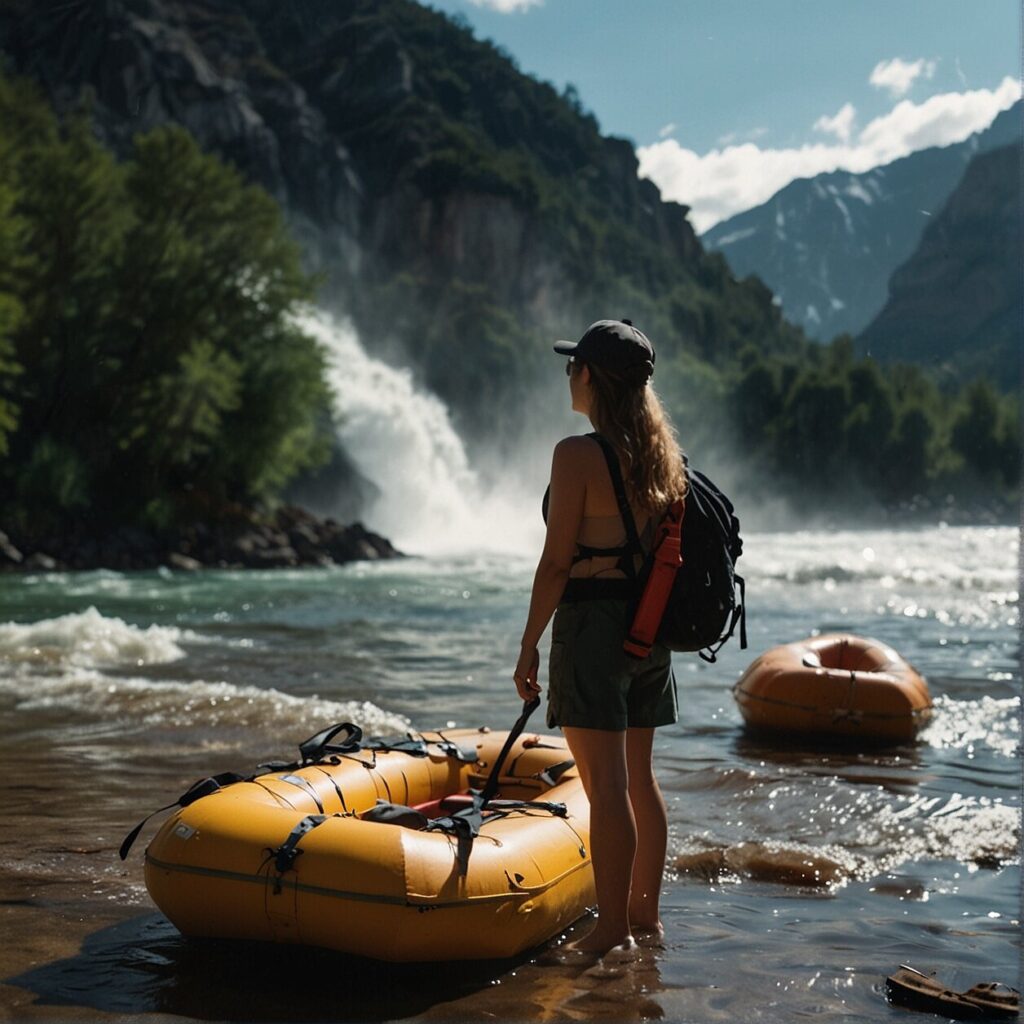
Reading the Rapids: Expert Tips on Navigating Alaska’s White Water
Lasering your eyes on the watercourse ahead while balancing your craft in harmony with the bouncing waters can be thrilling. However, reading the rapids correctly is an essential skill. Every contour, wave, or rock you encounter has a role in your white water rafting journey.
When rafting in Alaska’s waters, pay close attention to the ‘V’ formation on the river. This ‘V’ often points to the deepest and safest path to navigate. The wider end of the ‘V’ points to where the water is coming from, and the narrow end points downstream. It’s usually safest to steer your raft towards the narrow end.
On the other hand, stay clear of the reverse ‘V’ or the upside-down ‘V’. This shape indicates a rock or other obstruction that the water is splitting around, which is best avoided for a smooth ride.
Always remember, the water’s movement can be your best friend if you respect its power and flow. Watch for changes in water color and disturbances in the patterns of the waves; they can indicate shallower areas or incoming rapids.
Lastly staying relaxed and flexible is key in white water rafting; remember – firm but not rigid – are the perfect rafting postures. It allows for better maneuverability and a more enjoyable ride. So, put on your life jackets, grab your oars, and ride the Alaskan rapids like an expert!
Remember, it’s not just about facing the rapids, it’s about embracing the journey!
Unearth Alaska’s Hidden Gems: Top Locations for White Water Rafting
Immerse yourself in the tranquility of nature and the thrill of the rapids with the top white water rafting locations in Alaska. Whether you’re a seasoned rafter or a beginner, these spots offer strikingly diverse landscapes and waterways to explore.
Embrace the wilderness in Wrangell St. Elias National Park & Preserve. Offering white water rafting experiences in the majestic McCarthy and Tana Rivers, they allow rafters to navigate through glacial valleys and marvelous vistas. The frothing rapids of these rivers paired with the sheer, snowy peaks that surround them will take your breath away.
For an unorthodox coastal adventure, try Ocean Raft Alaska in Skagway. You’ll get the rush of white water rafting while simultaneously experiencing the mysterious allure of Alaska’s coastlines, creating a truly unique adventure.
Delve into the heart of the Denali area with Traverse Alaska. Enjoy scenic floats or the adrenaline-pumping white water experiences through winding river paths. The added options of packrafting and hiking make this a versatile choice for those wanting an expansive Alaskan adventure.
Further, explore the thrilling writhes and splashes of the Nenana River with New Wave Adventures. Situated near the Denali National Park, they offer rafters the choice of a serene paddling experience or an adrenaline-triggered thrill-ride. Choose how you want to experience the wild torrents of Alaska.
For a mix of river and glacier adventure, head to Glacier City for rafting and hiking. It’s the perfect spot to combine your white water rafting trip with a hiking excursion.
Finally, don’t miss out on the Kenai or Sixmile Rivers, where white water enthusiasts are welcomed with both Class III and Class IV rapids. The ride of a lifetime awaits, surrounded by the pristine wilderness of Alaska.
Channel your spirit of adventure, and make your reservation to experience the epitome of white water rafting in these Alaskan hotspots.
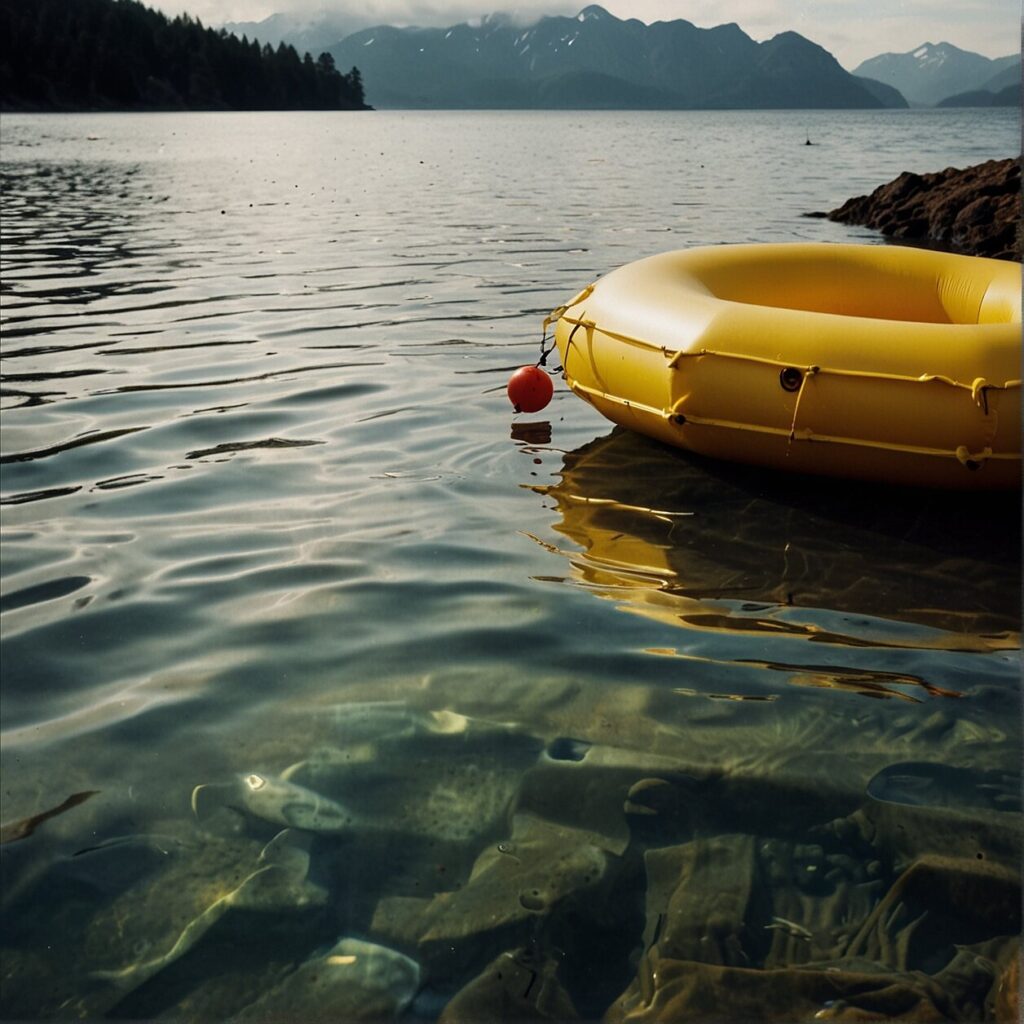
Outfitting for Your Adventure: Gear Essentials for Rafting in Alaska
Heading out for a white water rafting adventure in Alaska is as much about your courage and competence, as it is about the gear that keeps you safe and comfortable. Whether you’re taking a scenic float or are preparing for a full-fledged whitewater experience, the proper gear is integral to your Alaskan rafting experience.
Waterproof Gear
Fundamentally, the first thing you need to invest in is waterproof gear. Alaska’s glacial waters are chilly, and maintaining your body temperature can be the difference between a memorable ride and an uncomfortable experience. Consider purchasing a good quality dry suit specifically designed for water sports- a piece of gear that ensures physical comfort and hypothermia prevention.
Helmets and Life Vests
No raftsman should ever neglect safety. Therefore, always wear a protective helmet and life vest. Although many companies provide these, bringing your own ensures they fit correctly and have been well-maintained. Ensure your life vest is United States Coast Guard (USCG) approved and has a snug fit. The helmet should sit above your eyebrows and should not move around when fastened.
Shoes and Gloves
In terms of footwear, go for sturdy, closed-toe water shoes – they offer protection and friction even on the wettest surfaces. Don’t overlook wearing gloves; they can significantly reduce the risk of blisters from hours of paddling, whilst also keeping your hands warm.
Additional Gear
Last but not least, think about the auxiliary gear. A whistle for attracting attention in emergencies, a waterproof camera for all those Instagram-worthy moments, sunscreen, lip balm, and a dry bag to protect your belongings, might seem trivial but can be handy during your adventure.
To conclude, gearing up adequately will not only protect you from potential risk but also considerably enhance your rafting experience in the wild Alaskan waters. Always remember, as an adventurer, your first responsibility is towards your safety.
FAQ’S
Before embarking on your Alaskan white water rafting adventure, you may have some questions buzzing around in your brain. In this section, we’ve compiled a list of frequently asked questions we receive from enthusiastic rafters like you. We’ve touched upon everything – from your readiness for this thrilling escapade, to the risks, gear requirements, and even the wildlife you might catch a glimpse of during your journey. So, let’s dive in and make your Alaskan rafting adventure a success!
How can I prepare for white water rafting in Alaska?
Preparation for white water rafting in Alaska begins with physical conditioning. Activities such as swimming, jogging or cycling can significantly benefit your stamina and strength, both of which are vital when navigating the Alaskan rapids. It’s also essential to familiarize yourself with the basics of rowing and rafting. If you’re a novice, consider taking rafting lessons or participating in simulator experiences to gain some pre-travel experience.
Beyond that, being prepared means understanding what to expect from the Alaskan climate and landscapes. It helps to research into the specific rafting locations you’re planning to visit and understanding the unique challenges they might pose. Adequate clothing suited to the temperature and weather conditions is key, and packing waterproofs, multiple insulating layers, and a set of dry clothes can greatly improve your comfort.
Finally, while agencies like Traverse Alaska and New Wave Adventures offer guided tours with equipment and food provided, it is still important to ascertain what you may need to bring. Be sure to inquire in advance about specific provisions. An ideal rafting backpack could include essentials like UV protective sunglasses, sun block, insect repellent, and high-energy snacks – all packed in waterproof bags.
Being fully prepared ensures not only your safety, but also enhances the overall enjoyment derived from the rafting adventure.
What are the risks involved in white water rafting in Alaska?
Like any adventurous outdoor activity, white water rafting in Alaska does come with certain risks. However, it’s essential to underscore that these risks are manageable with the right approach and preparations.
The ever-changing weather conditions in Alaska can introduce unexpected challenges during your rafting expedition. Rapid weather shifts, cold water temperatures, and extreme heat can potentially create hazardous situations. Be attentive to current and forecasted weather conditions and plan your trip accordingly.
Another risk stems from the unpredictable nature of Alaska’s rivers. Changes in water levels and the presence of obstacles like boulders, trees, or wildlife can catch rafters off-guard. Understanding the river’s flow rate, depth and having a grasp on how to navigate around obstacles is crucial for a safe rafting experience.
Additionally, it’s important to acknowledge the physical and health-related risks. White water rafting is a physically demanding activity that requires a certain level of fitness. Be aware of your physical limits and ensure you’re up for the task. Health conditions such as heart disease, asthma, and diabetes can be exacerbated by the strenuous nature of this activity, so be sure to consult with a healthcare professional if there’s any doubt.
Lastly, rafters can face risks if they are ill-equipped or lack the proper training. Inadequate rafting gear can potentially expose you to hazards. Alongside this, insufficient knowledge about safety protocols and emergency response can elevate risks. It’s therefore advisable to go rafting with experienced guides who can navigate and handle tough situations during rafting expeditions.
All these risks, however, shouldn’t overshadow the exhilarating experience of white water rafting in Alaska. Being aware and adequately prepared can pave the way for a safe and unforgettable adventure.
Are there any guided tours for white water rafting in Alaska?
Absolutely! If you’re considering a white water rafting tour in Alaska, you’re definitely in luck. There are numerous guided tours available, tailored to cater to every level of the experience, starting from relaxing scenic floats to adrenaline-rushing whitewater experiences.
Amongst the many options, you can choose to raft the rivers in the Denali area with Traverse Alaska. They offer a variety of experiences, including scenic floats, whitewater rafting, packrafting, and even combination tours that incorporate hiking into the adventure.
Another place to consider is Skagway, where you might enjoy an outing with Ocean Raft Alaska. Or you might be drawn to the offerings by Talkeetna River Guides, renowned for their expertise in navigating Alaska’s waterways.
McCarthy Alaska also offers white water rafting experiences at the Wrangell St. Elias National Park & Preserve, which is always an exciting option, owing to the diverse and stunning natural beauty of the park.
Rafting the Nenana River near Denali National Park with New Wave Adventures also provides a unique experience. Their trips vary in length, from a quick 3-hour trip on mild water to a longer 5.5-hour run that includes navigating through difficult rapids.
Lastly, don’t forget to check out rafting options in the glacier-fed rivers and iceberg-filled lakes of Wrangell-St. Elias National Park, provided by St. Elias Alpine Guides. They offer tours ranging from half-day outings to 15-day expeditions, with no experience required – they’ll provide all the food and gear you need.
No matter the option you settle on, Alaska’s white water rafting community is equipped to ensure you have an unforgettable adventure, with safety always being held at prime importance!
Can I rent equipment for white water rafting in Alaska or should I bring my own?
Deciding between renting and bringing your own rafting gear comes down to personal preference and the intricacies of your travel logistics. However, you’ll find that renting is largely the most convenient and frequently chosen option by rafters visiting Alaska
Many reputable rafting companies in Alaska, such as the Ocean Raft Alaska in Skagway, New Wave Adventures at the Nenana River, or St. Elias Alpine Guides in Wrangell-St. Elias National Park, usually provide all necessary equipment as a part of their rafting packages. It simplifies the process and takes the guesswork out of determining what you’ll need. Importantly, these companies maintain high-quality gear that is tailored to the challenging Alaskan river conditions.
If you’re an experienced rafter with preferred gear, bringing your own equipment could also be a possibility. Make sure to consider the added hassle of transportation, especially if you’re doing a lot of traveling. Additionally, it’s key to know the rivers you’ll be navigating. Equipment that you are familiar with and is suitable for the specific Alaskan river conditions can enhance your rafting performance and safety.
Whether you rent or bring your own gear, always ensure that the equipment meets all safety standards. You want your Alaska white water rafting experience to be thrilling, but more importantly, you want it to be safe.
What kind of physical condition do I need to be in to go white water rafting in Alaska?
White water rafting can be a physically demanding sport, especially when tackling the adventurous rapids of Alaskan rivers. It’s important to note, however, the intensity of the trip can vary based on the river’s current and the route chosen. Different routes and rafting providers cater to different fitness levels, from laid back scenic floats to adrenaline-pumping Class III and IV rapids.
In general, a moderate level of physical fitness is beneficial for white water rafting. This includes having good cardiovascular endurance and overall strength, particularly in your upper body and core. The ability to swim is also crucial, and while it may not always be necessary due to the provided life vests and safety measures, it can add an extra layer of confidence and safety.
Even so, don’t let the physical demands deter you from this thrilling sport. Whether you’re an athletic pro, an active enthusiast, or not quite in your peak physical condition, rest assured there will be a rafting trip suitable for you. Many rafting companies take into consideration the fitness levels of their participants and adjust the difficulty of the tour accordingly. They often offer training or briefings before the trip, making it an inclusive activity for everyone.
When in doubt, it’s always a smart move to consult with your healthcare provider or a fitness professional to ascertain if you’re prepared for the physical exertion white water rafting can demand. Remember, safety is paramount, and your wellbeing is worth more than any thrill, no matter how exhilarating.

